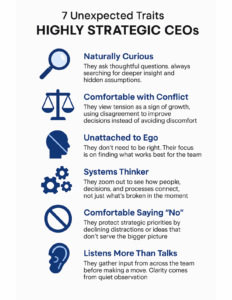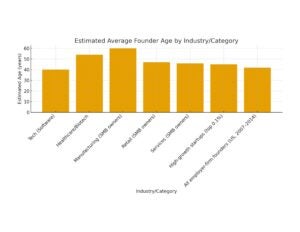Chapter 4: The Entrepreneurial Mindset
Learning Objectives
- Identify key traits and characteristics of successful entrepreneurs.
- Understand how creativity and innovation fuel opportunity recognition.
- Analyze common entrepreneurial challenges and strategies to overcome them.
- Examine how entrepreneurship addresses problems in rural and underserved communities.
Chapter Overview
This chapter examines the personal qualities and creative mindset that drive entrepreneurial success, emphasizing that entrepreneurship is as much about problem-solving and vision as it is about business formation. It explores the traits most commonly found in successful entrepreneurs—such as resilience, adaptability, and self-efficacy—and explains how creativity and innovation fuel opportunity recognition in dynamic markets. The chapter also addresses the real-world challenges entrepreneurs encounter, including limited capital, fear of failure, and lack of support networks, while offering strategic approaches for overcoming these barriers with the help of community ecosystems and AI-powered tools. Finally, it expands the lens beyond profit-driven ventures to show how entrepreneurship can serve as a transformative force in rural and underserved communities by improving access to healthcare, education, infrastructure, and economic opportunity.
Introduction
1.1 Characteristics of Successful Entrepreneurs
Successful entrepreneurs exhibit a distinct set of traits that enable them to thrive in uncertain and dynamic environments. While no single personality profile guarantees success, certain characteristics consistently appear among accomplished entrepreneurs:
- The ability to recover from setbacks and keep moving forward.
- Self-efficacy: A strong belief in one’s ability to effect change.
- Comfort with uncertainty and potential failure.
- Vision: A compelling long-term goal or aspiration that drives action.
- Resourcefulness: The capacity to solve problems with limited resources.
- Adaptability: Flexibility in adjusting to changing circumstances.
- Passion and Drive: Deep commitment to a mission or idea.
- Leadership and Influence: The ability to inspire and motivate others.
Example: Howard Schultz, former CEO of Starbucks, grew up in public housing and transformed a small coffee chain into a global brand. His entrepreneurial success stemmed from persistence, vision, and a people-first philosophy.
1.2 Creativity, Innovation, and Opportunity Recognition
is the spark that ignites entrepreneurship. It allows entrepreneurs to see possibilities where others see problems. Innovation, on the other hand, is the application of creative ideas in a way that delivers value to others.
Key Concepts:
- Creativity involves idea generation, lateral thinking, and seeing patterns.
- Innovation is the commercialization or practical application of creative ideas.
- Opportunity recognition is the process of identifying unmet needs, inefficiencies, or gaps in the market.
Example: Blake Mycoskie, founder of TOMS Shoes, recognized an opportunity to merge business with philanthropy through a “One for One” model, giving a pair of shoes to a child in need for every pair sold.
AI Perspective: AI tools like GPT-based assistants, trend analysis platforms, and data mining applications enhance opportunity recognition by surfacing patterns and customer needs that human eyes may miss.
1.3 Overcoming Challenges & Barriers
Every entrepreneur faces obstacles. What differentiates successful entrepreneurs is their ability to persist and problem-solve in the face of adversity.
Common Challenges:
- Limited access to capital
- Fear of failure or imposter syndrome
- Lack of mentorship or role models
- Market entry barriers or regulations
- Time and resource constraints
Strategies for Overcoming Barriers:
- Building supportive networks (e.g., incubators, accelerators)
- Seeking microfinance or crowdfunding options
- Leveraging AI to reduce startup costs (e.g., AI-generated design or content)
- Practicing lean startup principles and rapid prototyping
Example: Sophia Amoruso, founder of Nasty Gal and Girlboss, turned a vintage eBay store into a multimillion-dollar fashion brand despite lacking formal business training.
1.4 Solving Problems in Rural Communities and Society
Entrepreneurship is not just about profit—it can serve as a tool for social transformation, especially in rural or underserved areas.
Entrepreneurial Impact Areas:
- Healthcare access (e.g., mobile health clinics, telemedicine platforms)
- Education (e.g., e-learning startups tailored to rural connectivity)
- Agricultural innovation (e.g., smart irrigation, crop tracking AI)
- Job creation in areas with limited industry presence
- Infrastructure solutions such as affordable energy or clean water
Social Entrepreneurs:
- Muhammad Yunus, founder of Grameen Bank, revolutionized microfinance by lending to poor rural women in Bangladesh.
- Kanchana Thanapathy, founder of SheSays, used digital tools to increase awareness of sexual violence and access to support services in underserved regions.
AI Perspective: AI-powered applications like remote diagnostics, drone-based crop management, and adaptive learning software can bridge resource gaps in rural and low-income communities.

The “average age of entrepreneurs” can vary depending on what you mean (startup founders in general, high-growth ventures, small business owners, etc.). Here are some key findings from research and surveys:
-
General business founders (U.S.): The average age of small business founders is typically around 42 years old. Many new businesses are started by people with prior work and management experience.
-
High-growth startups: A 2018 MIT/Stanford/Northwestern study of 2.7 million founders in the U.S. found the average age of successful tech startup founders was 45. The researchers noted that the stereotype of the “college dropout entrepreneur” is rare compared to experienced professionals.
-
Global view: In OECD countries, most entrepreneurs also fall in the 35–44 and 45–54 age brackets, though developing countries often see younger founders due to necessity entrepreneurship.
-
Young entrepreneurs: While founders under 30 make up a visible part of the startup ecosystem (e.g., Silicon Valley), they are a minority compared to mid-career professionals who launch businesses later.

Conclusion
The entrepreneurial mindset is about more than launching a business—it involves creative problem-solving, a passion for improvement, and a willingness to take action despite uncertainty. When coupled with AI technologies, this mindset has the power to solve global challenges, create inclusive growth, and bring sustainable innovation to even the most underserved regions. So, the average age of an entrepreneur is usually early to mid-40s, though it depends on the sector and region
Chapter Summary
This chapter explores the human side of entrepreneurship, emphasizing that successful ventures begin with mindset and personal capability rather than capital or technology. It introduces key entrepreneurial traits such as resilience, creativity, self-efficacy, and adaptability, showing how figures like Howard Schultz used vision and persistence to transform humble beginnings into global enterprises. Creativity and innovation are presented as core to opportunity recognition, demonstrating how entrepreneurs like Blake Mycoskie identified unmet needs and turned them into impactful business models. The chapter also examines common challenges—lack of capital, limited mentorship, regulatory barriers—and highlights practical strategies like networking, lean methods, microfinance, and AI-enabled tools that lower startup costs and increase accessibility to entrepreneurship. Importantly, the discussion expands beyond profit to show how entrepreneurship drives social change, particularly in rural and underserved communities through innovations in education, healthcare, agriculture, and financial inclusion. Examples like Muhammad Yunus’s microfinance model illustrate how entrepreneurship can reduce inequality and empower marginalized populations. With AI now enhancing data insight, pattern recognition, and operational efficiency, entrepreneurship is positioned not just as a business activity but as a catalyst for inclusive growth and sustainable innovation.
Key Terms
Licenses and Attribution
CC Licensed Content, Original
This educational material includes AI-generated content from ChatGPT by OpenAI. The original content created by Dr. Melissa Brooks from Hillsborough College is licensed under a Creative Commons Attribution-NonCommercial 4.0 International License (CC BY-NC 4.0).
All images in this textbook generated with DALL-E are licensed under the terms provided by OpenAI, allowing for their free use, modification, and distribution with appropriate attribution.
The capacity to recover quickly from difficulties and maintain performance under stress.
is an individual's or organization's ability and willingness to accept risk or uncertainty to achieve a desired outcome, such as financial goals
. It involves both psychological comfort with risk (willingness) and the financial capacity to withstand potential losses (ability), and it is influenced by factors like age, financial situation, goals, and time horizon.
The ability to generate novel and valuable ideas or solutions.
A way of thinking that embraces innovation, resilience, and opportunity recognition.
The creation and implementation of new ideas, products, or processes that add value.
The ability to identify and evaluate potential business or innovation opportunities.
The practice of developing ventures that address social problems through innovative solutions.
The use of artificial intelligence to enhance creativity, product design, and innovation processes.

